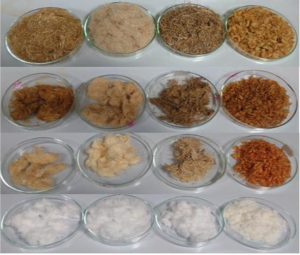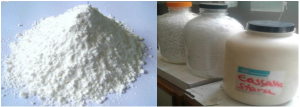- Extraction and Characterization of Celluloses from Different Local Plant Sources
Tesfaye Gabriel, Getahun Paulos, Prof. Tsige Gebre-Mariam
School of Pharmacy, College of Health Sciences, Addis Ababa University
Cellulose is the most abundant polysaccharide produced in nature. Although cellulose is available in all plants, it can be extracted from cellulose rich plants. The objective is to extract and characterize cellulose from teff straw, enset fiber, and sugarcane bagasse.
- Production of Modified Cassava, Dioscorea and Enset starches for Industrial applications
Getahun Paulos, Tesfaye Gabriel, Prof. Tsige Gebre-Mariam
Starch continues to be attractive as a material of choice not only because of its availability and low cost but also due to eco-friendly and ease of modification. However, due to its limitations such as its poor compressibility, flow property, and limited swelling capacity, native starch is often modified by physical, chemical and enzymatic methods.
Cassava, disocrea and enset starches and their derivatives have versatile applications in pharmaceutical industries. Hence, they can be used as alternative starches in pharmaceutical industries, especially in Ethiopia, where almost all of the starch used are imported from abroad.
- Production of Native Cassava, dioscorea and Enset starches for Industrial applications
Starch is the second most abundant compound produced in higher plants. It is found in Seeds (wheat, maize, rice, etc.), Roots & tubers of potato, cassava, and so on. The native starches were evaluated as a binder and disintegrant in compressed tablets. The result indicated that they can be used both as a tablet binder and disintegrant.
Fibers from teff straw, enset fiber, sugarcane bagasse and coffee hull (left to right)
Casava Powder Extracted


